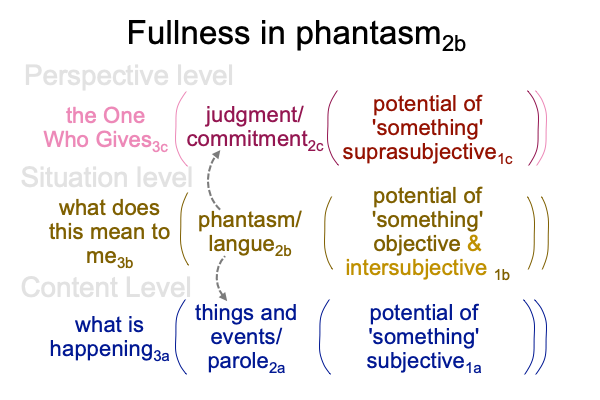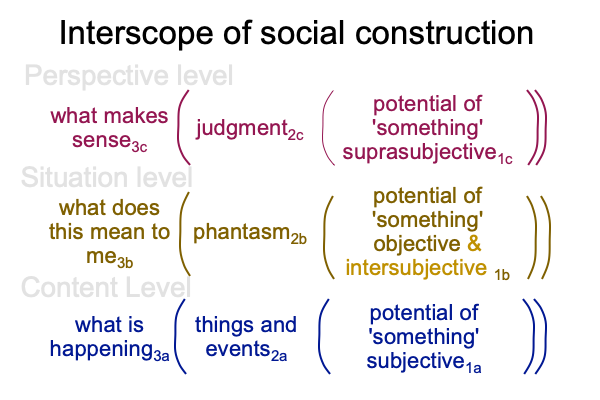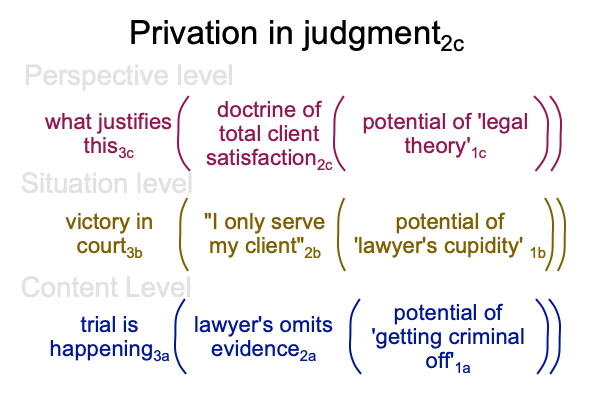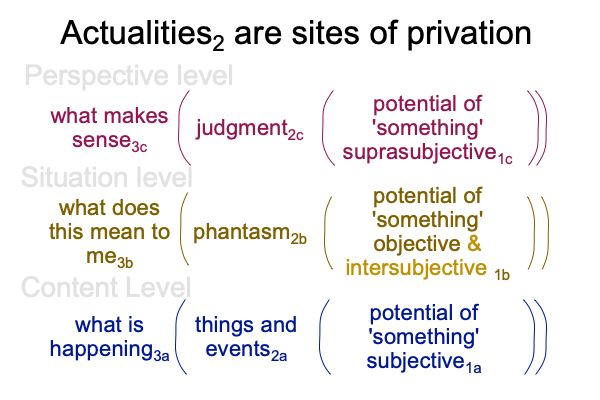Looking at Kirk Kanzelberger’s Essay (2020) “Reality and the Meaning of Evil” (Part 9 of 18)
0038 I see what is happening3a, I ask, “What does this mean to me3b?”.
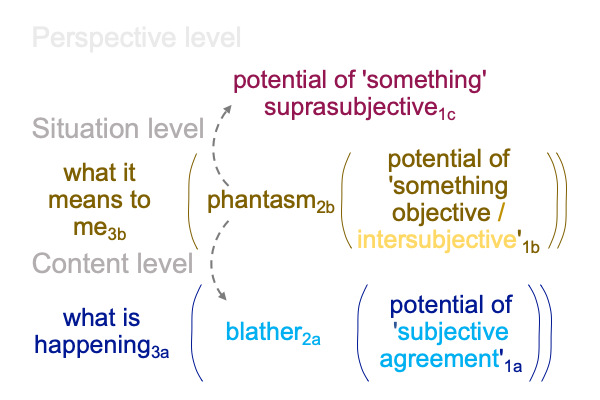
This business about phantasms2b is crucial. If our mind-dependent beings, our phantasms2b, are to stand the trial of the suprasubjective1c, then their symbols2b must be true1c. Plus, they must be able to be subjectively1a communicated. They must be witnessed as things and events2a.
0039 There is a profoundly biological reason for this. Our genus evolves by cooperating in teams. Each team is like the cat. It disposes privations to others, in order to achieve its perfection. One team hunts rabbits. Another team digs up tubers. Human teams hunt and gather, all in the pursuit of their fullness of being. The One Who Gives, Without Us Knowing Why, provides in many different ways.
Just as metabolism resides in every living being, the One Who Gives, resides in each social circle. As noted in Comments on Clive Gamble, John Gowlett and Robin Dunbar’s Book (2014) Thinking Big, the One Who Gives is an object that brings all teams into relation. Otherwise, teams might come into conflict. Like metabolism, this relational object stands undifferentiated from the organization objectives of each team. This relational object sustains them all.
0040 We choose our teams based on disposition and natural abilities. Or maybe, our teams choose us. After all, if a prosperous team lasts long enough, generation after generation, our kind will adapt to its challenges. The tasks will become more intuitively natural. Evolutionary psychologists will call these adaptations, “mental modules”.
0041 In the Lebenswelt that we evolved in, there is no contradiction between the phantasm2b simultaneously touching base with the potential of truth1c and the potential of subjective agreement1a. That is because hand talk2a and hand-speech talk2a image and indicate their referents1a. A referent1a defines the objectivity1b of each gesture word2a. The referent1a is also suprasubjectively evident1c. If it1a were not real1c, it1a could not be imaged or indicated2a.
In our current Lebenswelt, there is a contradiction. Speech-alone2a talk is purely symbolic. It2a does not image or point to anything1c. So, the phantasm2b suffers a privation, opening the door to a condition where the potential of subjective agreement1a may be actualized without the simultaneous realization of the potential consilience1cunderlying the One Who Gives, Without Us Knowing Why3c.

